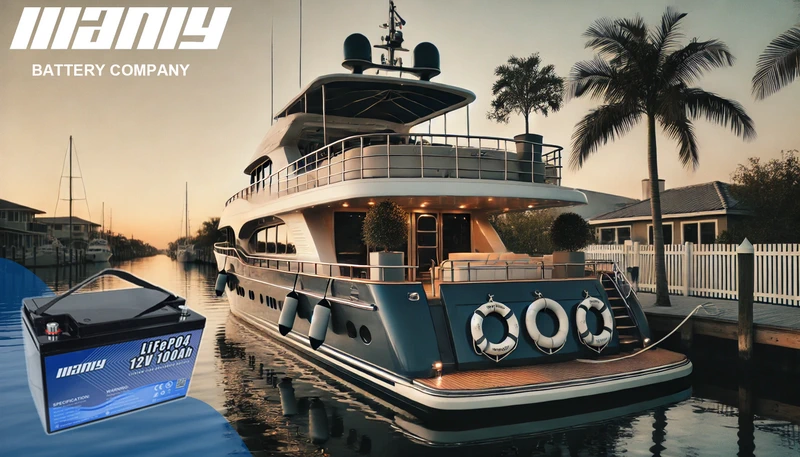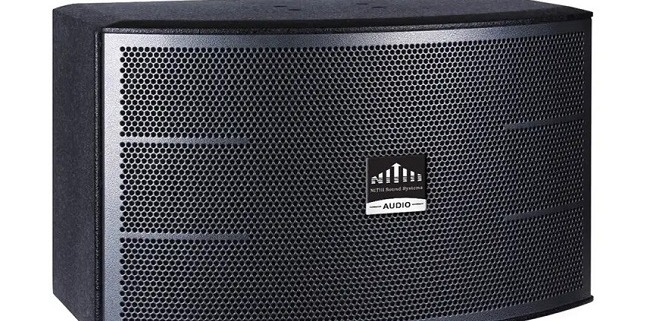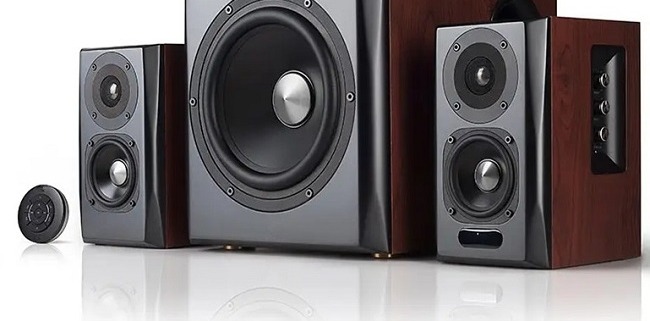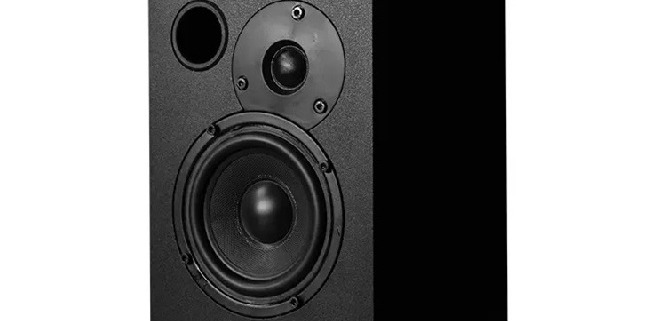What Type of Battery is a Marine Battery? A Detailed Breakdown
Table of Contents
- What Type of Battery is a Marine Battery? A Detailed Breakdown
- What is a Marine Battery?
- Different Types of Marine Batteries and Their Features
- The Best Choice: LiFePO4 Batteries for Marine Use
- Why LiFePO4 Batteries Are the Best Marine Batteries?
- Conclusion
- FAQ
- Hot Search
- Seven main performance indicators that determine the quality of sound
- Introduction of sound
- The battle between speaker intelligence and sound quality
Maintaining a consistent and dependable boating experience depends on choosing the right marine battery. Whether you use a trolling motor, start your engine, or run electronics, the appropriate battery type will make all the difference. The several choices for batteries make many sailors find it difficult to choose the right one.
This article will break apart lead-acid, AGM, gel, and LiFePO4 batteries as well as other types of marine batteries. You will learn every type in great depth, including its benefits, drawbacks, and optimal uses. By the conclusion, you will understand the reason LiFePO4 batteries are the best fit for marine applications.
What is a Marine Battery?
Designed especially to withstand adverse sea conditions, a marine battery is Unlike automobile batteries, which only provide short bursts of electricity to start an engine, marine batteries must deliver constant power for lengthy durations while tolerating vibrations, dampness, and temperature variations.
- Usually driven by its intended use, marine batteries are categorized:
- The starting battery runs the boat motor. It gives a brief, sharp boost but lacks long-term vitality.
- Deep-cycle batteries run constantly for lights, fish finders, and trolling motors among other equipment.
- A dual-purpose battery sometimes performs worse than dedicated beginning and deep cycle batteries, even if it aims to combine two uses.
These classification indicate the use of a marine battery, although the most important factor influencing battery performance is battery chemistry. Chemistry of a battery determines its general performance, longevity, efficiency, and maintenance requirements.
Different Types of Marine Batteries and Their Features
The several kinds of marine batteries are listed below, together with their characteristics:
Lead-Acid Marine Batteries
Lead-acid batteries have been used in marine conditions as they have been rather competitively priced and widely available for decades. These batteries chemically react with lead plates and sulphuric acid to generate power.
Flooded Lead-Acid (FLA) Batteries
Flooded lead-acid batteries are the most classic form. They demand consistent maintenance, including topped off distilled water. They are heavy, require ventilation, have a shorter lifetime than other battery types even if they are economically priced.
Sealed Lead-Acid Batteries
Lead-acid batteries sealed eliminate maintenance needs and are spill-proof. Two most widely used variants that improve performance over typical flooded lead-acid batteries are AGM (absorbed glass mat) batteries and gel batteries.
Advantages of Lead-Acid Marine Batteries
Lead-acid batteries are reasonably cheap and rather numerous. Their great starting current makes them worth using for engine cranking.
Disadvantages of Lead-Acid Marine Batteries
Lead-acid batteries need regular maintenance, weigh a lot, and charge slowly. Usually running for two to four years, their lifetime is short; they break down upon discharge below 50% capacity.
AGM (Absorbed Glass Mat) Marine Batteries
AGM batteries are spill-proof and maintenance-free by absorbing the electrolyte using fiberglass mats, therefore improving traditional lead-acid designs.
How do AGM Batteries Work?
By immobilising the electrolyte inside the glass mat, AGM batteries reduce the possibility of leaking and hence maximise power efficiency. Since this structure lets for better resistance to vibrations and faster charging periods, AGM batteries are a more durable replacement for flooded lead-acid batteries.
Advantages of AGM Marine Batteries
Zero maintenance and faster charging than other lead-acid models describe AGM batteries. Their lifetime is between three and six years, and they have more resistance to deep discharges.
Disadvantages of AGM Marine Batteries
AGM batteries remain heavier than lithium alternatives even with their superior performance. On a tight budget, they also appeal less to boaters since they cost more than flooded lead-acid batteries.
Gel Marine Batteries
Gel batteries use liquid electrolytes from a silica-based gel. Less leaks and greater deep discharge performance are made possible by this chemical composition.
How do Gel Batteries Work?
The gel-based electrolyte lowers chemical reactions, therefore reducing the possibility of overcharging or deep discharge. Applications needing constant, long-term power will find ideal use for these batteries.
Advantages of Gel Marine Batteries
Gel batteries resist high temperatures, maintain a longer lifetime than flooded lead-acid batteries, and require no maintenance.
Disadvantages of Gel Marine Batteries
The slow charging rate of gel batteries is its biggest drawback. Furthermore expensive than AGM and flooded lead-acid batteries are they are. Less forgiving than other battery kinds, overcharging can damage a battery permanently.
The Best Choice: LiFePO4 Batteries for Marine Use
The most intelligent and powerful marine batteries are LiFePO4 (Lithium Iron Phosphate). Unlike lead-acid batteries, which rely on chemical interactions between lead and acid, they offer constant and dependable power by means of lithium-ion technology.
Why LiFePO4 Batteries are Superior?
Among their most important benefits are LiFePO4 batteries’ extended lifespan. Lead-acid batteries run two to six years; LiFePO4 batteries can run ten years or more. Since they weigh up to 70% less than lead-acid batteries and are more easily handled, they also greatly improve boat performance.
Charging time offers still another major advantage. Five times faster charging of LiFePO4 batteries than with lead-acid batteries Unlike lead-acid batteries, which have to be kept above 50% charge, they also enable total discharges free from battery damage.
Are There Any Drawbacks to LiFePO4 Batteries?
The sole negative of LiFePO4 batteries is their starting cost. For seasoned sailors, however, they are the most affordable choice because of their long lifetime, fast charge times, and low maintenance needs.
Why LiFePO4 Batteries Are the Best Marine Batteries?
LiFePO4 batteries have long-term benefits above all other battery models, even if their initial expense makes many sailors unwilling to switch. Boats carrying LiFePO4 batteries had 30% longer running lifetime on electronic systems and trolling motors, according a study by marine engineers.
Savings in weight also improve performance. LiFePO4 technology lets a boat greatly reduce the weight of its battery, therefore enhancing fuel economy and general maneuverability. Boaters looking for dependability, fast charging, and long-lasting performance would best invest in LiFePO4 batteries.
Conclusion
The perfect sailing voyage depends on selecting the right marine battery. Though lead-acid, AGM, and gel batteries are still somewhat popular, none give the efficiency, lifetime, and long-term savings LiFePO4 batteries offer.
LiFePO4 batteries from MANLY Battery provide the finest answer if you want a dependable and high-performance marine battery. Their innovative lithium technology guarantees exceptional energy economy, therefore assuring that your boat keeps running without the trouble of regular replacements.
For premium-quality marine batteries, visit MANLY Battery today and experience the next generation of marine power solutions.
FAQ
1. Is a deep cycle battery the same as a marine battery?
Let’s clarify: a deep cycle battery and a marine battery aren’t the same, although they have similarities. Here’s why:
A deep cycle battery provides a steady power flow over an extended period. It’s designed for applications that need consistent energy, like golf carts, RVs, or renewable energy systems. These batteries are built to handle repeated discharges and recharges without losing performance.
On the other hand, a marine battery is specifically made for boats. However, marine batteries come in two types: starting and deep cycle. A starting battery delivers a quick surge of power to start the engine, while a deep cycle marine battery powers your boat’s electronics and other devices.
So, while some marine batteries are deep cycle, not all deep cycle batteries work as marine batteries. If you’re choosing a battery for your boat, ensure it’s designed for marine use to get the most reliable power.
2. What are the three types of marine batteries?
Marine batteries come in three main types, each serving a different purpose. Understanding their roles helps you pick the right one for your boat:
- Starting Batteries: Starting batteries provide a quick burst of power to start your engine. They’re all about delivering a high-energy jolt for a short time. These batteries are not designed to power other devices, so they focus only on getting your engine running.
- Deep Cycle Batteries: Need power for your boat’s electronics, trolling motor, or other accessories? Deep cycle batteries are your answer. They deliver steady, long-lasting energy and can discharge and recharge multiple times without losing capacity. Perfect for extended trips or when you’re off the grid!
- Dual Purpose Batteries: As the name suggests, dual purpose batteries combine the functions of both starting and deep cycle batteries. They give you enough power to start your engine and supply energy to your accessories. They offer versatility but may not provide as much power as a dedicated starting or deep cycle battery.
Hot Search
Marine Lithium Battery Battery Manufacturer
Hello
1. Power:
The audio power is further divided into rated power/carrying power/peak power.
Rated power: refers to the maximum electrical power that drives an 8Ω speaker within the rated range and specifies a continuous analog signal with a waveform. After a certain interval and repeated a certain number of times, the speaker does not suffer any damage.
Carrying power: refers to the average power of the signal that is allowed to be applied to the audio input under the condition that the speaker is allowed to have a certain distortion. The loudspeaker unit with high power load is not easy to be distorted due to the high power provided by the power amplifier, and can have an ideal performance when listening to bursting music; and the speaker needs to cooperate with the power amplifier to provide a large sound pressure, and It doesn’t mean that a loudspeaker with a high power load is necessarily “loud enough”.
Peak power: refers to the maximum power that the speaker can withstand in a short period of time.
The power of the speaker is one of the important indicators for choosing a speaker. Due to different understandings of the definition of power at home and abroad, there are still great differences in the standard method of loudspeakers. The nominal power of the general speaker is the rated power. Rated power or rated noise power refers to the input power when the speaker can work continuously for a long time without producing abnormal sound. According to the standard of the International Electrotechnical Commission (IEC), the speaker under test should ensure that no abnormality occurs during 100 hours of continuous operation.
2.Signal to Noise Ratio:
The signal-to-noise ratio indicates the ratio of the sound signal and the noise signal played back by the speaker under normal conditions. It directly affects the sound broadcasting quality of the speaker. Usually, the lower the signal-to-noise ratio and the smaller the input signal, the more serious noise will appear in the speaker, and the sound in the entire sound range will obviously become turbid and unclear. what sound. In order to ensure the sound effect, it is recommended that speakers with a signal-to-noise ratio of more than 80dB can be included in the purchase scope.
3.Frequency response:
This indicator reflects the main frequency range of the speaker’s work. The wider the range, the better the sound reproducing characteristics. Generally, the frequency response of a high-fidelity speaker box is 20-30KHz. People basically cannot perceive the sound below 20Hz. can be felt through other organs.
4.Sensitivity:
Sensitivity refers to the sound pressure level measured at 1m in the axial direction when the speaker is applied with a pink noise signal voltage equivalent to 1W of power on the rated impedance. The sensitivity of a speaker has no decisive influence on sound reproduction. Because one can get enough volume by adjusting the output of the amplifier. However, in the production of speakers, the sensitivity of the speaker is a parameter worth paying attention to. The sensitivity of each speaker unit must be basically the same in the frequency band that is responsible for reproducing, so that the high, medium and bass balance of the entire speaker can be reproduced.
Especially for stereo speakers, the units used in the left and right channels must be strictly screened and matched. It is required that the output sound pressure level difference of the units used for the left and right channels should be within plus or minus 1d, otherwise it will affect the positioning of the sound image. The sensitivity of professional speakers is above 95dB/m.w, even as high as 120dB/m.w. The sensitivity of home speakers is small, even if they can have 92dB/m.w.
5.Distortion:
The concept of speaker distortion degree and amplifier distortion degree are basically the same, but the amplifier input is an electrical signal, and the output is still an electrical signal, while the speaker input is an electrical signal, and the output is a sound wave signal, so the distortion degree of the speaker is an electrical signal. The amount of distortion that occurs when converting to and from the sound signal. The distortion index is only a general statement, and it should be divided into three types: harmonic distortion, mutual distortion and transient distortion.
6.impedance:
This indicator represents the ratio of the voltage and current of the input signal of the speaker speaker. Usually, the input impedance of the speaker can be divided into two categories: high impedance and low impedance. The speaker of the ohm is a low impedance level, and the standard impedance of the speaker is usually 8 ohms.
7.Crossover point:
The crossover point refers to the dividing point between the high-pass, band-pass and low-pass filters of the frequency divider. It is usually expressed in frequency and the unit is Hertz. The high-bass two-way speaker has only one crossover point, and the high, medium and low three-way speakers have two crossover points. The crossover point should be determined according to the frequency characteristics and power distribution of the speaker unit or speaker in each frequency band.
A speaker is a device that restores an electrical signal to a sound signal, and the authenticity of the restoration will be an important criterion for evaluating the performance of the speaker.
According to different sounding principles and internal structures, speakers can be divided into several types: inverted, closed, flat, horn, labyrinth, etc. The most important forms are closed and inverted.
The closed speaker is to install the speaker on the closed box, and the efficiency is relatively low;
The difference between the vented speaker and it is that it is equipped with a circular vent hole on the front or rear panel. It works according to the principle of Helmholtz resonator and has the advantages of high sensitivity, high power tolerance and wide dynamic range. Because the sound wave on the back of the speaker is also released from the phase guide hole, its efficiency is also higher than that of the airtight box. And the same speaker installed in a suitable inverter box will be 3dB higher than the low-frequency sound pressure obtained in a closed box of the same volume, which is beneficial to the performance of the low-frequency part.
So this is also an important reason why the inverter box is widely popular.
In the speaker industry, there are two major technical schools, one is smart speakers focusing on artificial intelligence; the other is traditional sound quality speakers that focus on sound quality.
The two have different emphases due to differences in performance and structure. Smart speakers are developed due to artificial intelligence, and they focus on experience, so sound quality is secondary. If you strip away the built-in artificial intelligence, such products can be called loudspeakers at best. The blessing of artificial intelligence enables such products to recognize human instructions, so as to complete operations such as playing, pausing music, or controlling other smart appliances. It is an interactive platform that integrates music, smart home, online network and one of the products selected as the smart home entrance.
Traditional sound quality speakers are based on sound quality and pay attention to the sense of hearing, so the function is more pure. Taking Soundbar as an example, as a supplement, enhancement or replacement of TV sound quality, the main selling point of such products is to provide users with a more complete listening experience. Soundbar is actually a miniaturized home audio and video. It is a thin and light TV that cannot carry very good speakers, resulting in poor TV sound quality. As a supplement, enhancement or replacement product for TV sound quality, it can be used in a limited volume. It can achieve dual-channel or even multi-channel effects.
As an alternative to TV speakers, the form of external speakers has been changing, from speakers that enhanced the sound quality of TVs to a combination of TV boxes and speakers, the representative of which is Skyworth’s Xiaopai speakers. When this type of product is not connected to the TV, it can be used as a simple speaker. After connecting to the TV through a cable, it can function as a TV box and a speaker at the same time. The Philips TV’s approach is even more extreme. The 973 TV released recently integrates the speakers and the rest of the TV components into a base, which takes into account the thinness of the screen and retains the sound quality. In addition, this type of speaker also has the function of playing music through a wireless network, Bluetooth, cable or interface to connect to a mobile phone or a lossless player.
Although smart speakers and traditional sound-quality speakers are contrary in function, they directly constitute a competitive relationship. Smart speakers rely on ecology and make quick money; while traditional sound-quality speakers are “fine work”. Behind the competition between the two is an attempt to monopolize the standard of the speaker industry. For example, South Korea’s two giants LG and Samsung, LG announced on August 20 that it will expand the “X Boom” product line from existing home audio to wireless and artificial intelligence speakers; Samsung Electronics acquired it as early as 2016. Harman Kardon, an American audio and automotive electronic equipment company, has launched top-level Soundbars around the world. Industry insiders believe that with the connection between TV and smart phones, games, etc., there is a synergistic effect between TV and audio, which has led to the gradual expansion of the speaker market.
The two companies actually represent two different speaker preferences, the trade-off between “smart” and “sound quality.” Compared with the high price of traditional sound quality speakers, the price of about 1,000 yuan for smart speakers is more likely to be favored by consumers, while the low price of smart speakers comes from low cost. However, factors such as low cost and the space occupied by the control module lead to insufficient sounding units for smart speakers. Even most speakers only have one sounding unit, so the sound quality cannot be discussed on smart speakers. Therefore, the selling point of smart speakers is not “speaker” but “intelligent”.
But for many consumers, the sound quality and appearance of speakers are the most essential things to judge the value of speakers, and intelligence may only be a plus. When faced with smart speakers with similar prices and traditional sound quality speakers, the latter is obviously more worth buying. Because smart speakers are only one of the optional entrances to the smart home ecosystem, the option of “smart speakers” is not the only option for smart homes. In order to obtain a better listening experience, it is obviously the sound quality that is more important.
At this stage, “intelligence” and “sound quality” may still be incompatible. Those who have always pursued sound quality have been wandering in more advanced products, but in the mass market, taking into account the intelligence means that it will cost more Efforts to build an ecology and focus on sound quality require spending on raw materials and adjustments. The combination of “intelligence” and “sound quality” means higher costs and a bit further from the mass market.







